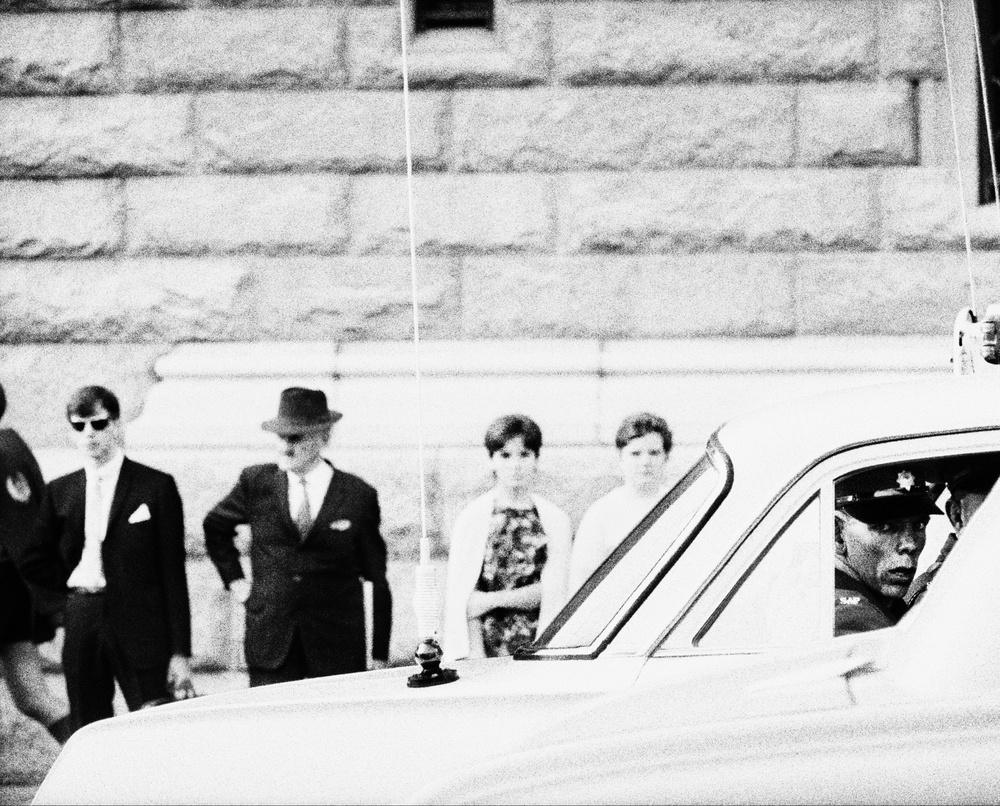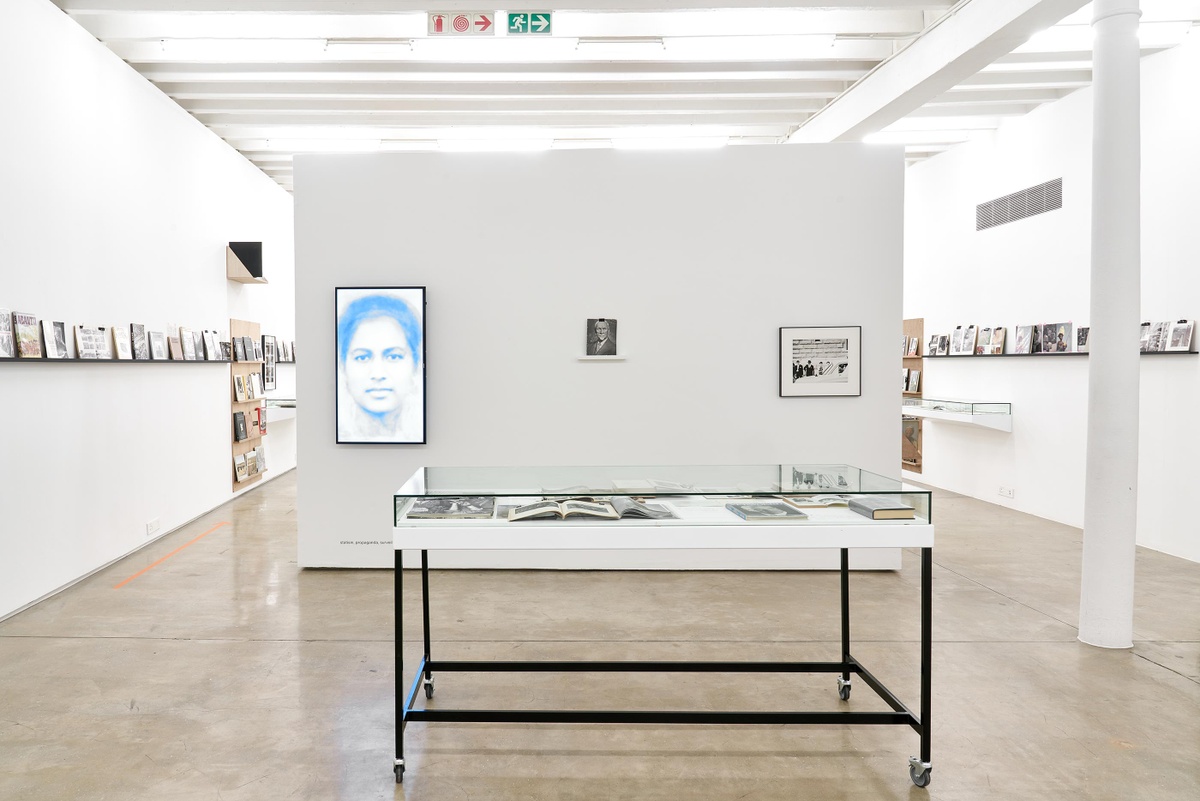David Goldblatt

Of this work, Goldblatt said:
I was photographing in Pretoria, on Church Square, when into my viewfinder came a police squad car. The policeman sitting in the back glared out at me. I almost instinctively photographed him. But at the same time, I was very aware of people behind the policeman, a row of solid white citizens standing in a bus queue. And I see myself in that bus queue being protected by that very policeman’s gun.
Policeman in a squad car on Church Square was first published in Some Afrikaners Photographed (1975). It is also included in Fifty-one Years, 2001; Some Afrikaners Revisited, 2007; and Kith Kin & Khaya, 2011.
b.1930, Randfontein; d.2018, Johannesburg
“I was drawn,” the late photographer David Goldblatt wrote, “not to the events of the time but to the quiet and commonplace where nothing ‘happened’ and yet all was contained and immanent.” A preeminent chronicler of South African life under apartheid and after, Goldblatt bore witness to how this life is written on the land, in its structures or their absence. Unconcerned with documenting significant historic moments, his photographs stand outside the events of the time and yet are eloquent of them. Through Goldblatt’s lens, the prosaic reveals a telling poignancy. Even in those images that appear benign, much is latent in them – histories and politics, desires and dread. His photographs are quietly critical reflections on the values and conditions that have shaped the country; those structures both ideological and tangible. Among his most notable photobooks are On the Mines (1973), Some Afrikaners Photographed (1975), In Boksburg (1982), The Structure of Things Then (1998), and Particulars (2003).

